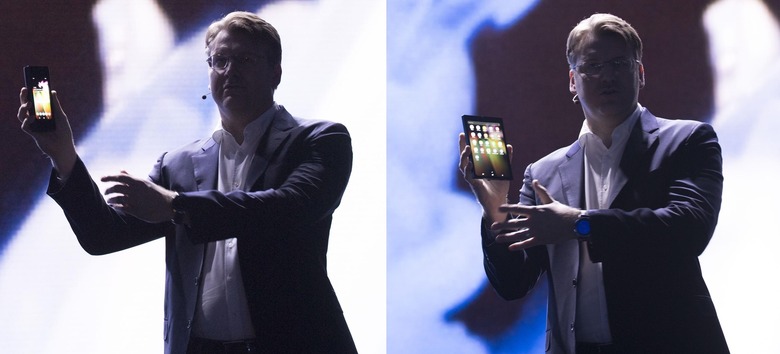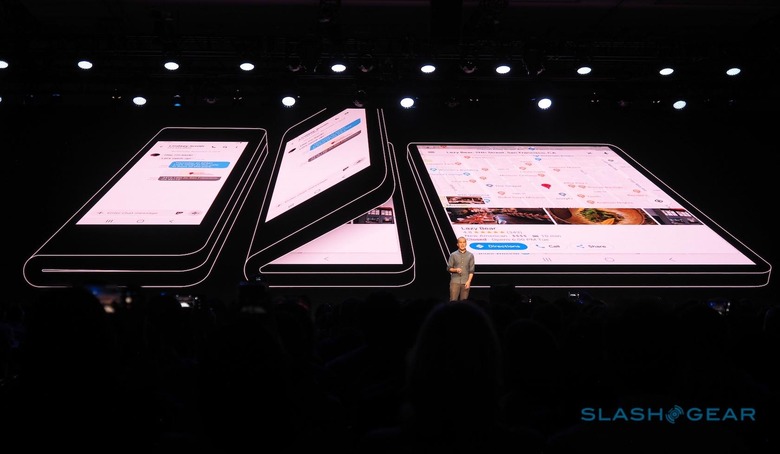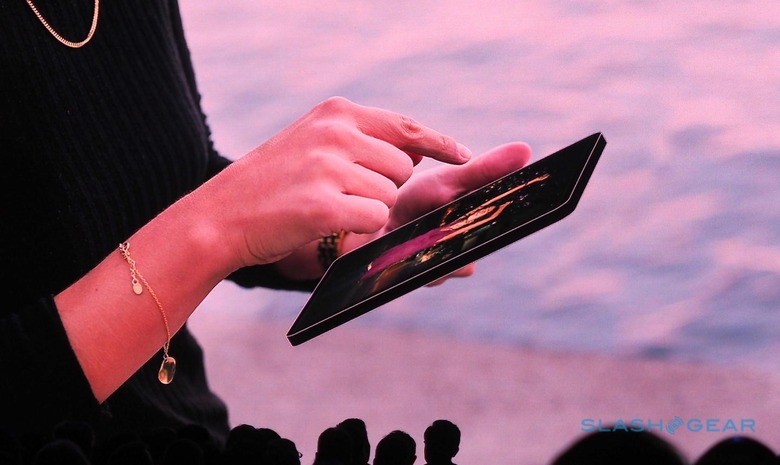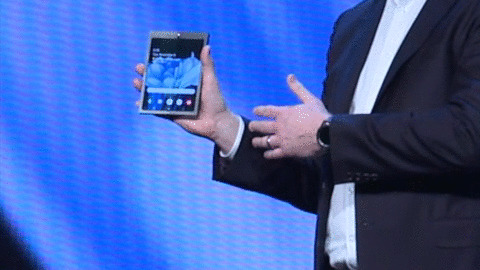The Samsung foldable phone has more questions than answers
Samsung is making a foldable phone but, though we've seen the screen, there remain more questions than answers about the Android device and the market for others like it. Previewed at Samsung's opening keynote at its annual developer conference, SDC 2018, the heavily-disguised handset was more about showing off Samsung Display's flexible AMOLED technology than making a pitch to phone buyers themselves.
Certainly, Samsung Display's abilities with the screen technology aren't to be underestimated. There's a reason that not only Samsung Mobile but numerous other big players in the phone and tablet business are using the South Korean company's panels. Part of that is how it not only chases the cutting-edge, but helps to define it.
Foldable AMOLED is the latest step in that journey, and there's certainly no shortage of potential to it. The device Samsung showed off at SDC this week was disguised, the company not ready yet to show off its final industrial design. All the same, its core talent was in full effect.

Closed, it looks like a chunky candy bar, fronted by a touchscreen that looks a little truncated. Measuring in at around 4.4-inches, it only covers roughly two-thirds of the front of the device. Enough, certainly, for casual interactions, but the lure is really what's hidden inside.
That's the so-called Samsung Infinity Flex display. A 7.3-inch touchscreen that can fold down its center, allowing the smartphone to clamshell open and offer a significantly larger screen than most smartphones out there today.
Samsung has shared the fundamentals with us. We know the size and the resolution of both the external "Cover Display" and the foldable screen inside. Its approach – and that of Google – to apps that not only seamlessly transition between those screens, but support multitasking with up to three apps visible at once, has also been outlined, at least generally.
That still leaves a whole host of questions unanswered. As my colleague J.C. Torres asks, where is Samsung's S Pen in all of this? Undoubtedly some of the Infinity Flex device's appeal stems from memories of Microsoft's Courier project, but that was intended for pen input as well as touch.

Just how sleek the final product might be is also questionable. We've reached a limit of sorts with current technology around batteries and other key components: you can't make a phone like the Galaxy S9 or Galaxy Note 9 much thinner, unless you want to compromise on power capacity and other specifications. At some point, physics catches up with you.
Sure, the Samsung foldable phone may be able to spread its battery pack out more broadly, flattening it so as to take advantage of more width. Nonetheless you have to accommodate a USB-C port, which has fixed dimensions, and the depth of camera sensors and other parts. It's impossible to imagine a foldable phone that, when it's closed, is still as thin as a Note 9.

The balance of compromises shifts, therefore, rather than being squashed altogether. Yes, you get a larger display than you could realistically manage on a traditionally-shaped smartphone. At the same time, though, you're probably looking at a thicker device when closed. Samsung says it wants to deliver at least as much battery life from its foldable as a current Galaxy flagship can achieve: shrinking down the li-ion packs inside, simply to make for a more aesthetically pleasing device on the outside, isn't an option.
Samsung finds itself skating the edge of a familiar line in the tech world. New products can be as shiny, as technologically advanced, and as fiendishly clever as you like, but if you can't justify them – and their premium, whether in price or the time involved in acclimatization – to consumers then all that doesn't really matter. You can't just pitch components, you have to know why they're better than what's already out there.

There's still time for Samsung to answer those questions. It's not going it alone, either: Google has clearly seen enough in the technology to warrant baking support directly into Android, and pushing developers to build their apps with morphing form-factors in mind. That's huge, since – despite expensive events like SDC – Samsung's individual sway among the app-making community still isn't enough to allow it to shape a new category like this independently.
Price and purpose will be the two factors by which Samsung's foldable phone are judged, in the end. Too expensive, and it will have priced itself out of the market. Too vague in the reasons for its very existence, though, and Samsung and Google could end up damning the form-factor far more damagingly in the long term.
